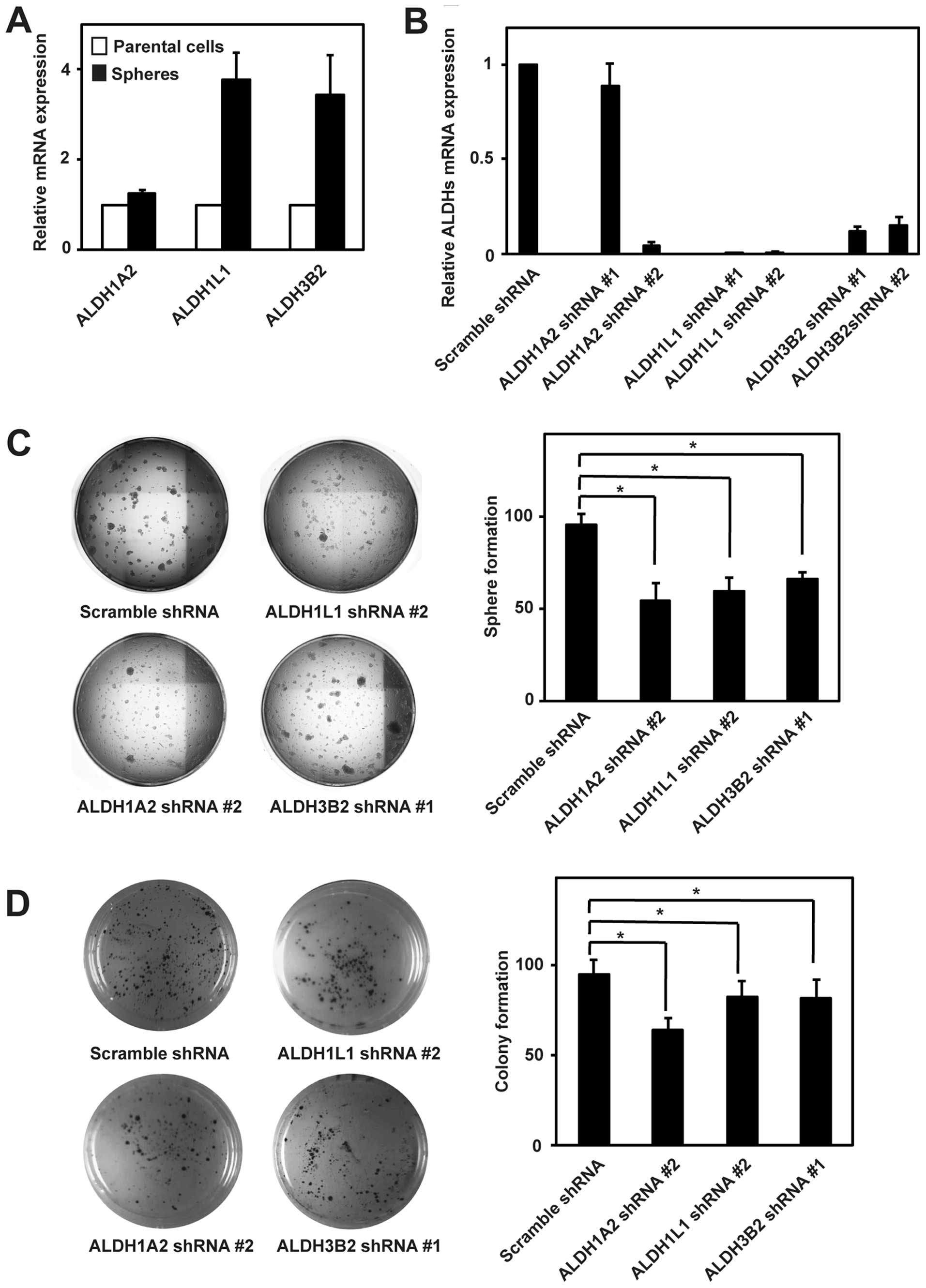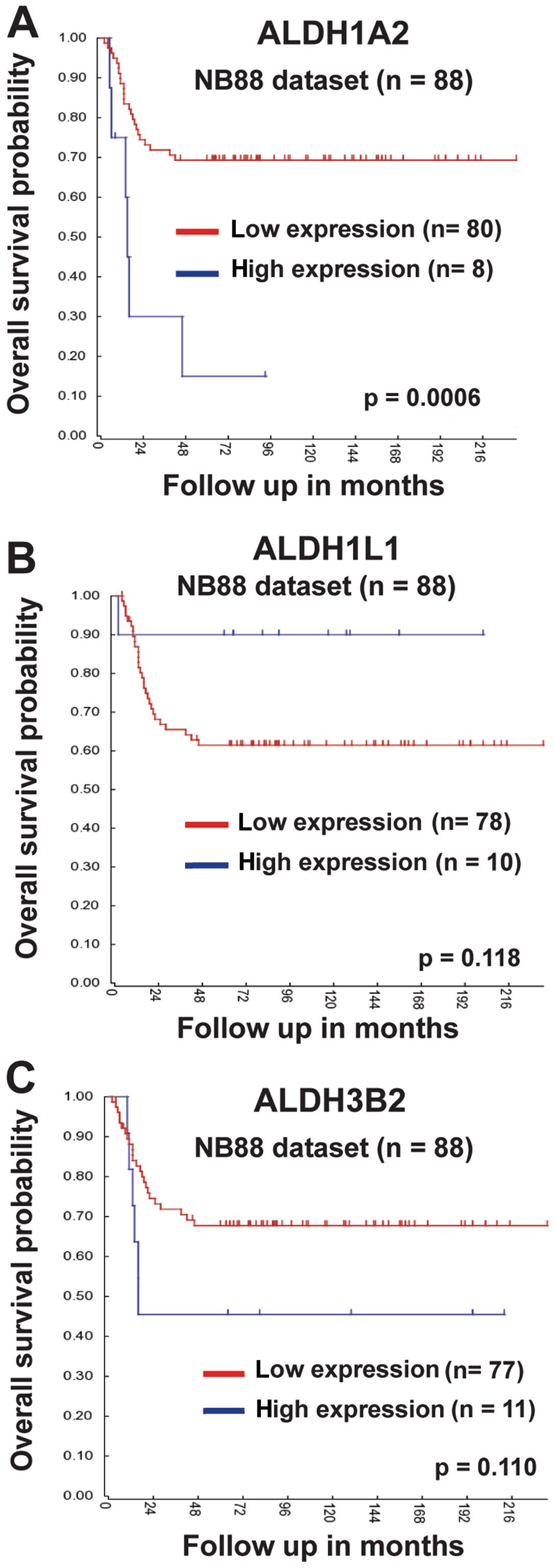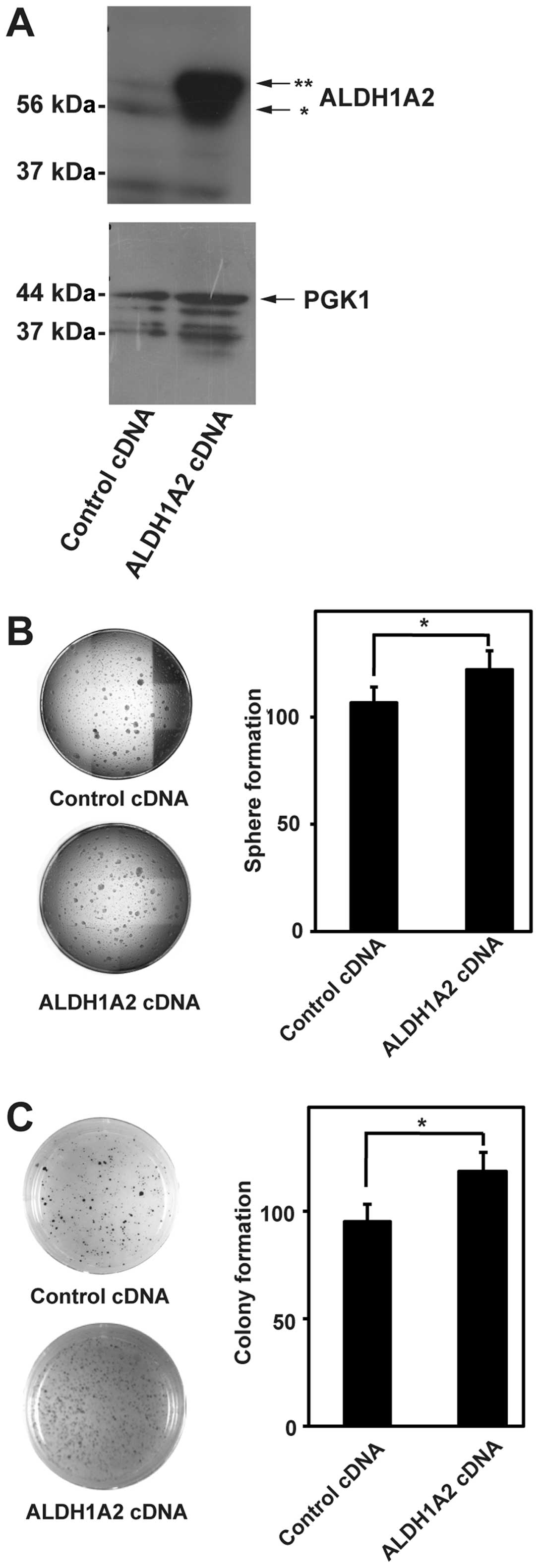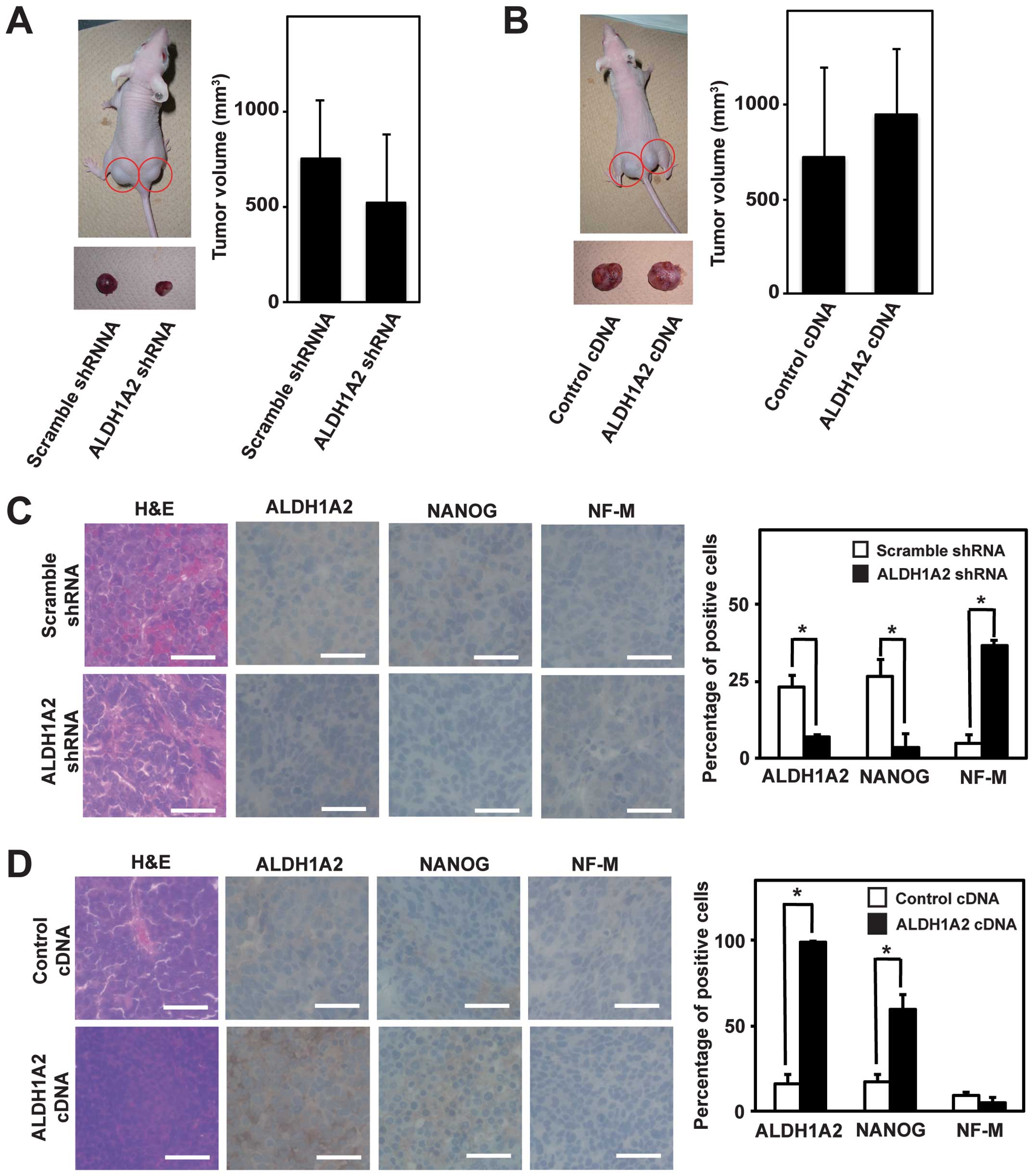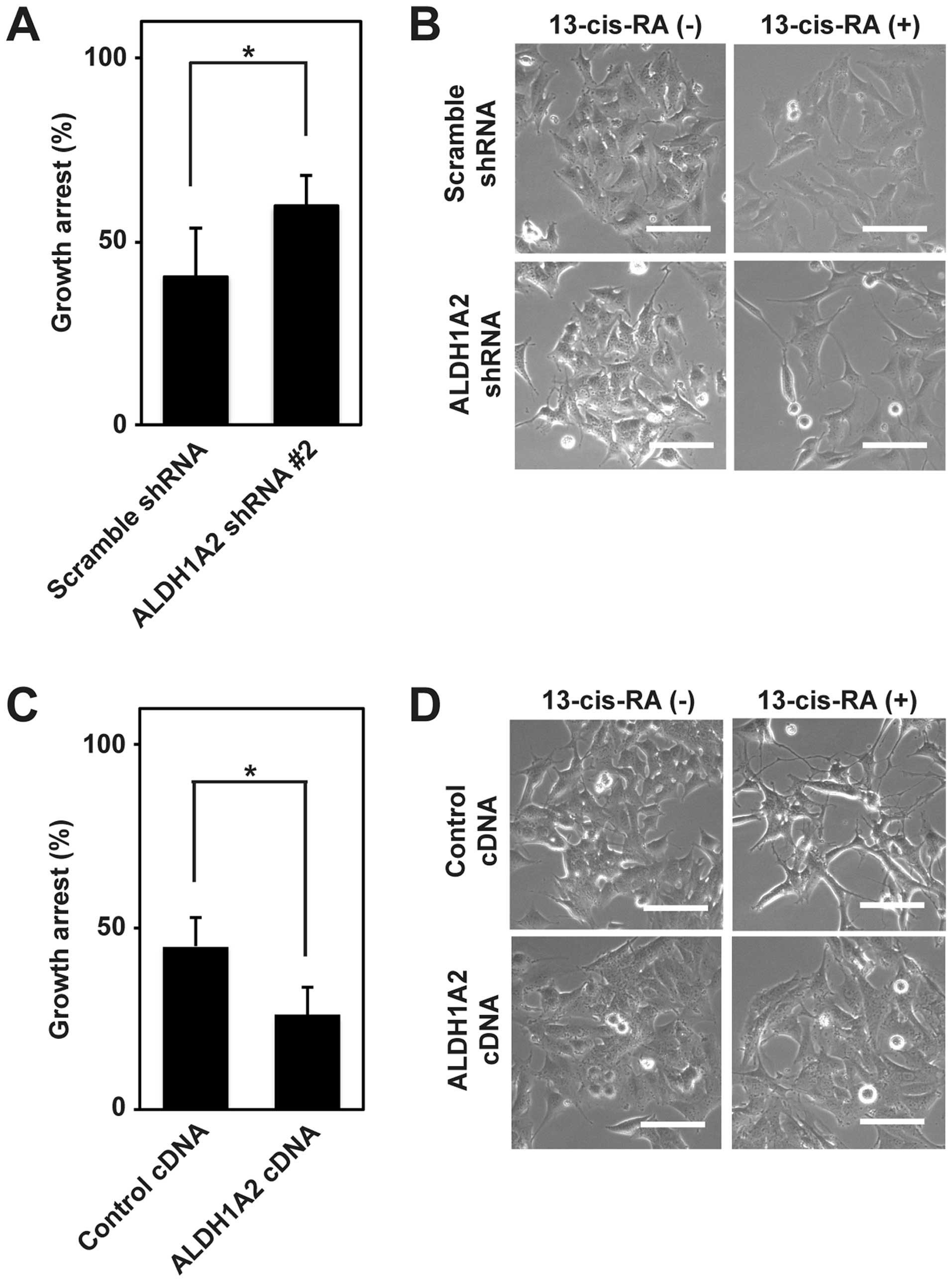|
1
|
Brodeur GM: Neuroblastoma: biological
insights into a clinical enigma. Nat Rev Cancer. 3:203–216. 2003.
View Article : Google Scholar : PubMed/NCBI
|
|
2
|
Laverdière C, Liu Q, Yasui Y, et al:
Long-term outcomes in survivors of neuroblastoma: a report from the
Childhood Cancer Survivor Study. J Natl Cancer Inst. 101:1131–1140.
2009. View Article : Google Scholar : PubMed/NCBI
|
|
3
|
Maris JM: Recent advances in
neuroblastoma. N Engl J Med. 362:2202–2211. 2010. View Article : Google Scholar : PubMed/NCBI
|
|
4
|
Cole KA and Maris JM: New strategies in
refractory and recurrent neuroblastoma: translational opportunities
to impact patient outcome. Clin Cancer Res. 18:2423–2428. 2012.
View Article : Google Scholar : PubMed/NCBI
|
|
5
|
Matthay KK, Villablanca JG, Seeger RC, et
al: Treatment of high-risk neuroblastoma with intensive
chemotherapy, radiotherapy, autologous bone marrow transplantation,
and 13-cis-retinoic acid. Children’s Cancer Group. N Engl J Med.
341:1165–1173. 1999. View Article : Google Scholar : PubMed/NCBI
|
|
6
|
Yu AL, Gilman AL, Ozkaynak MF, et al:
Anti-GD2 antibody with GM-CSF, interleukin-2, and isotretinoin for
neuroblastoma. N Engl J Med. 363:1324–1334. 2010. View Article : Google Scholar : PubMed/NCBI
|
|
7
|
Visvader JE and Lindeman GJ: Cancer stem
cells in solid tumours: accumulating evidence and unresolved
questions. Nat Rev Cancer. 8:755–768. 2008. View Article : Google Scholar : PubMed/NCBI
|
|
8
|
Vermeulen L, de Sousa e Melo F, Richel DJ
and Medema JP: The developing cancer stem-cell model: clinical
challenges and opportunities. Lancet Oncol. 13:e83–e89. 2012.
View Article : Google Scholar : PubMed/NCBI
|
|
9
|
Cheung N-KV and Dyer MA: Neuroblastoma:
developmental biology, cancer genomics and immunotherapy. Nat Rev
Cancer. 13:397–411. 2013. View
Article : Google Scholar : PubMed/NCBI
|
|
10
|
Hansford LM, McKee AE, Zhang L, et al:
Neuroblastoma cells isolated from bone marrow metastases contain a
naturally enriched tumor-initiating cell. Cancer Res.
67:11234–11243. 2007. View Article : Google Scholar : PubMed/NCBI
|
|
11
|
Hirschmann-Jax C, Foster AE, Wulf GG, et
al: A distinct ‘side population’ of cells with high drug efflux
capacity in human tumor cells. Proc Natl Acad Sci USA.
101:14228–14233. 2004. View Article : Google Scholar
|
|
12
|
Takenobu H, Shimozato O, Nakamura T, et
al: CD133 suppresses neuroblastoma cell differentiation via signal
pathway modification. Oncogene. 30:97–105. 2011. View Article : Google Scholar
|
|
13
|
Hsu DM, Agarwal S, Benham A, et al: G-CSF
receptor positive neuroblastoma subpopulations are enriched in
chemotherapy-resistant or relapsed tumors and are highly
tumorigenic. Cancer Res. 73:4134–4146. 2013. View Article : Google Scholar : PubMed/NCBI
|
|
14
|
Sartelet H, Imbriglio T, Nyalendo C, et
al: CD133 expression is associated with poor outcome in
neuroblastoma via chemo-resistance mediated by the AKT pathway.
Histopathology. 60:1144–1155. 2012. View Article : Google Scholar : PubMed/NCBI
|
|
15
|
Jackson B, Brocker C, Thompson DC, et al:
Update on the aldehyde dehydrogenase gene (ALDH) superfamily. Hum
Genomics. 5:283–303. 2011. View Article : Google Scholar : PubMed/NCBI
|
|
16
|
Kastan MB, Schlaffer E, Russo JE, Colvin
OM, Civin CI and Hilton J: Direct demonstration of elevated
aldehyde dehydrogenase in human hematopoietic progenitor cells.
Blood. 75:1947–1950. 1990.PubMed/NCBI
|
|
17
|
Ma I and Allan AL: The role of human
aldehyde dehydrogenase in normal and cancer stem cells. Stem Cell
Rev. 7:292–306. 2011. View Article : Google Scholar
|
|
18
|
Marcato P, Dean CA, Giacomantonio CA and
Lee PWK: Aldehyde dehydrogenase: its role as a cancer stem cell
marker comes down to the specific isoform. Cell Cycle.
10:1378–1384. 2011. View Article : Google Scholar : PubMed/NCBI
|
|
19
|
Sullivan JP, Spinola M, Dodge M, et al:
Aldehyde dehydrogenase activity selects for lung adenocarcinoma
stem cells dependent on notch signaling. Cancer Res. 70:9937–9948.
2010. View Article : Google Scholar : PubMed/NCBI
|
|
20
|
Chen Y, Orlicky DJ, Matsumoto A, Singh S,
Thompson DC and Vasiliou V: Aldehyde dehydrogenase 1B1 (ALDH1B1) is
a potential biomarker for human colon cancer. Biochem Biophys Res
Commun. 405:173–179. 2011. View Article : Google Scholar : PubMed/NCBI
|
|
21
|
van den Hoogen C, van der Horst G, Cheung
H, et al: High aldehyde dehydrogenase activity identifies
tumor-initiating and metastasis-initiating cells in human prostate
cancer. Cancer Res. 70:5163–5173. 2010. View Article : Google Scholar : PubMed/NCBI
|
|
22
|
Nishimura N, Pham TVH, Hartomo TB, et al:
Rab15 expression correlates with retinoic acid-induced
differentiation of neuroblastoma cells. Oncol Rep. 26:145–151.
2011.PubMed/NCBI
|
|
23
|
Pham TVH, Hartomo TB, Lee MJ, et al: Rab15
alternative splicing is altered in spheres of neuroblastoma cells.
Oncol Rep. 27:2045–2049. 2012.PubMed/NCBI
|
|
24
|
Nishimura N, Hartomo TB, Pham TVH, et al:
Epigallocatechin gallate inhibits sphere formation of neuroblastoma
BE(2)-C cells. Environ Health Prev Med. 17:246–251. 2012.
View Article : Google Scholar :
|
|
25
|
Tomayko MM and Reynolds CP: Determination
of subcutaneous tumor size in athymic (nude) mice. Cancer Chemother
Pharmacol. 24:148–154. 1989. View Article : Google Scholar : PubMed/NCBI
|
|
26
|
Kanda I, Nishimura N, Nakatsuji H,
Yamamura R, Nakanishi H and Sasaki T: Involvement of Rab13 and
JRAB/MICAL-L2 in epithelial cell scattering. Oncogene.
27:1687–1695. 2008. View Article : Google Scholar
|
|
27
|
Coulon A, Flahaut M, Mühlethaler-Mottet A,
et al: Functional sphere profiling reveals the complexity of
neuroblastoma tumor-initiating cell model. Neoplasia. 13:991–1004.
2011.PubMed/NCBI
|
|
28
|
Niederreither K, Subbarayan V, Dollé P and
Chambon P: Embryonic retinoic acid synthesis is essential for early
mouse post-implantation development. Nat Genet. 21:444–448. 1999.
View Article : Google Scholar : PubMed/NCBI
|
|
29
|
Deak KL, Dickerson ME, Linney E, et al:
Analysis of ALDH1A2, CYP26A1, CYP26B1, CRABP1, and CRABP2 in human
neural tube defects suggests a possible association with alleles in
ALDH1A2. Birth Defects Res A Clin Mol Teratol. 73:868–875. 2005.
View Article : Google Scholar : PubMed/NCBI
|
|
30
|
Pavan M, Ruiz VF, Silva FA, et al: ALDH1A2
(RALDH2) genetic variation in human congenital heart disease. BMC
Med Genet. 10:1132009. View Article : Google Scholar : PubMed/NCBI
|
|
31
|
Styrkarsdottir U, Thorleifsson G,
Helgadottir HT, et al: Severe osteoarthritis of the hand associates
with common variants within the ALDH1A2 gene and with rare variants
at 1p31. Nat Genet. 46:498–502. 2014. View
Article : Google Scholar : PubMed/NCBI
|
|
32
|
Duester G: Retinoic acid synthesis and
signaling during early organogenesis. Cell. 134:921–931. 2008.
View Article : Google Scholar : PubMed/NCBI
|
|
33
|
Niederreither K and Dollé P: Retinoic acid
in development: towards an integrated view. Nat Rev Genet.
9:541–553. 2008. View
Article : Google Scholar : PubMed/NCBI
|
|
34
|
Patel M, Lu L, Zander DS, Sreerama L, Coco
D and Moreb JS: ALDH1A1 and ALDH3A1 expression in lung cancers:
correlation with histologic type and potential precursors. Lung
Cancer. 59:340–349. 2008. View Article : Google Scholar
|
|
35
|
Kim H, Lapointe J, Kaygusuz G, et al: The
retinoic acid synthesis gene ALDH1a2 is a candidate tumor
suppressor in prostate cancer. Cancer Res. 65:8118–8124. 2005.
View Article : Google Scholar : PubMed/NCBI
|
|
36
|
Touma SE, Perner S, Rubin MA, Nanus DM and
Gudas LJ: Retinoid metabolism and ALDH1A2 (RALDH2) expression are
altered in the transgenic adenocarcinoma mouse prostate model.
Biochem Pharmacol. 78:1127–1138. 2009. View Article : Google Scholar : PubMed/NCBI
|
|
37
|
Mao P, Joshi K, Li J, et al: Mesenchymal
glioma stem cells are maintained by activated glycolytic metabolism
involving aldehyde dehydrogenase 1A3. Proc Natl Acad Sci USA.
110:8644–8649. 2013. View Article : Google Scholar : PubMed/NCBI
|
|
38
|
Huang S, Laoukili J, Epping MT, et al:
ZNF423 is critically required for retinoic acid-induced
differentiation and is a marker of neuroblastoma outcome. Cancer
Cell. 15:328–340. 2009. View Article : Google Scholar : PubMed/NCBI
|
|
39
|
Hölzel M, Huang S, Koster J, et al: NF1 is
a tumor suppressor in neuroblastoma that determines retinoic acid
response and disease outcome. Cell. 142:218–229. 2010. View Article : Google Scholar : PubMed/NCBI
|




